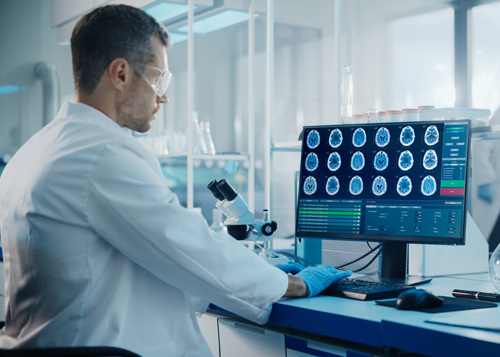Opioids are powerful drugs used to relieve pain. Even though opioids can help you feel better, these drugs do have a dark side. Opioids have a high potential for abuse, which often leads to excessive use that can easily develop into addiction. Regular opioid misuse can cause:
Misusing opioids can also lead to overdose. In fact, our nation is still dealing with an opioid crisis, which claims an estimated 128 American lives each day. In 2019 alone, more than 70% of deaths involved an opioid. Luckily, detoxification, behavioral therapy, and medication assisted treatment can help treat opioid addiction.
The term “opioid” refers to natural and synthetic painkiller drugs derived from or based on the opium poppy plant. Opioids can be illicit drugs or medications prescribed by doctors. Regardless of their type, opioids work by decreasing the number of pain signals the body sends to the brain. Opioids can also change how your brain responds to pain.
Generally, doctors prescribe opioid medications to relieve both acute and chronic pain. These afflictions can include anything from mild injuries and toothaches to surgeries and severe dental procedures to pain associated with cancer. Some prescription cough medicines may also contain opioids. When used correctly and as prescribed, opioid medication is typically safe. However, all opioids, even prescription versions, come with a high risk of abuse which can make individuals physically and chemically dependent.
Heroin is an illicit opioid. When people use opioids recreationally or stop following their doctor’s instructions, they greatly increase their risk of opioid addiction.
Opioid addiction is a powerful, compulsive urge to use opioid drugs. For people prescribed opioid medication, a common sign of opioid addiction is using the medication when it’s no longer required or needed. This compulsion is driven by opioids’ interactions with the brain’s reward center.
When an addiction to opioids develops, many individuals start to exhibit signs such as:
Individuals misusing opioids may also display the following symptoms:
Like other forms of addiction, opioid use disorder can be treated by detoxing the body and behavioral therapy. However, recovery plans that include medication for opioid addiction tend to increase the chance of recovery success.
At StoneRidge Centers, we know that addiction originates in the brain. This is why we prioritize healing the brain as a catalyst of long-term addiction recovery. Combining evidence-based treatments and brain-focused therapies, we help individuals overcome opioid addiction by using the following recovery activities:
When necessary, we may use medications to help normalize brain chemistry, relieve cravings, and in some cases, prevent withdrawal symptoms. Some of the most common medication used to assist opioid addiction treatment include:
Even though opioids relieve pain, they can lead to addiction. Luckily addiction doesn’t have to continue to control your life. Our brain-focused approach to recovery can help you:
Let us help you live an addiction-free life. Contact us today if you’re ready to manage your pain in a healthy way.

TMS, Ketamine & Neurofeedback
Brain-focused treatment that sets us apart.
StoneRidge offers what few other practices provide – innovative, scientifically proven, and research-backed therapeutic options. From Transcranial Magnetic Stimulation (TMS) to Brain Mapping, our treatment combines trusted practices with modern approaches, ensuring our patients receive the best all-around care.


We exercise progressive, leading brain science in our treatment approach for patients in the Prescott Valley community and across the country who are struggling with mental health and addiction challenges.
© 2025 StoneRidge Centers – Prescott Valley. All Rights Reserved.